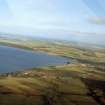Tain, Glenmorangie Distillery
Distillery (19th Century)
Site Name Tain, Glenmorangie Distillery
Classification Distillery (19th Century)
Alternative Name(s) Morangie Brewery
Canmore ID 14686
Site Number NH78SE 15
NGR NH 76730 83800
NGR Description Centred NH 76730 83800
Datum OSGB36 - NGR
Permalink http://canmore.org.uk/site/14686
First 100 images shown. See the Collections panel (below) for a link to all digital images.
- Council Highland
- Parish Tain
- Former Region Highland
- Former District Ross And Cromarty
- Former County Ross And Cromarty
NH78SE 15 centred 76730 83800
Glenmorangie Distillery [NAT]
OS (GIS) MasterMap, June 2009.
(Location cited as NH 767 838). Glenmorangie Distillery, Tain, rebuilt c. 1888. A smallish distillery, with a fair proportion of old buildings, including two malting kilns.
J R Hume 1976.
Established in 1843, the distillery is situated on the north side of Tain, and was converted from what was the Morangie Brewery. It is one of only 2 distilleries in Scotland that makes whisky from hard water (from Tarlogie Springs nearby). After being described by Barnard in the early 1880s (p.163)) as being primitive and almost ruinous, the distillery was modernised, a process which involved the early use of steam coils (as opposed to direct flame from coal fires) to heat the wash in the pot stills. The pot stills themselves are said to be the tallest in Scotland.
Having spent part of the First World War silent, the distillery was purchased by Macdonald & Muir of Leith in 1918, the current owners. In the decades after the Second World War, Glenmorangie established itself as one of the premier single-malt whiskies. The strength of the brand was such that distilling capacity was expanded from two to four in 1980 at a time of contraction elsewhere in the industry, and doubled again in 1990. The increased capacity was such that the malt barns were unable to satisfy the demand for malted barley. From 1980, therefore, floor-malting ceased at the distillery, and all malt was bought in from central maltings. The maltings and kiln were subsequently converted to house a new Mash House and Tun Room, and a new Still House was built in 1990.
Other changes to the site have included a major expansion of bonded warehouse capacity with the addition of several tall rack-storage blocks, which augment single-storeyed traditional warehouses at the north end of the site near to the Highland Railway. The popularity of the Glenmorangie brand, and the integration of whisky distilleries into tourist visitor trails, also encouraged the opening of a museum and new visitor centre in 1997 and 2000 respectively.
Information from Glenmorangie plc and Alfred Barnard (1887), 'The Whisky Distilleries of the United Kingdom', Hume, J R and Moss, M S, 'The Making of Scotch Whisky'
Information from RCAHMS (MKO) 2003.
Publication Account (2009)
Small-scale industrial development did occur, the chief component being the whisky distillery at Morangie. Although the traditional date of its opening is given as 1843, it was only in 1849 that William Matheson, partner in Balblair Distillery and tenant of the adjoining farm, converted the existing brewery buildings into a distillery. Although Matheson succeeded in keeping the distillery in production, he was always short of capital for improvements and expansion, and in 1887 the premises were described as ‘certainly the most primitive and ancient we have seen, and now almost in ruins’. Matheson secured a lifeline in 1860 when his eldest daughter married Duncan Cameron, agent and later manager of the Commercial Bank in Tain. In 1887 he formed the Glenmorangie Distillery Company in partnership with Cameron and Andrew Maitland (a partner with his brother James in a successful architects’ practice in Tain), and immediately planned a complete rebuild. The core of the existing complex was erected in 1888–89 to designs by James Maitland, and by 1890 production had resumed. The driving force was Andrew Maitland, who was also head of the successful family firm of architects and a local politician.The business appears to have gone into decline after his sudden death in 1899; James, who succeeded him on the board, evidently had little interest in whisky. There are indications that maintenance was allowed to slip after 1900, and the operation was in financial difficulties before the outbreak of war in 1914. The company traded until 1918 when it was sold to Macdonald and Muir Distillers of Leith.
Information from ‘The Scottish Burgh Survey, Historic Tain: Archaeology and Development’, (2009).














































































































































































































